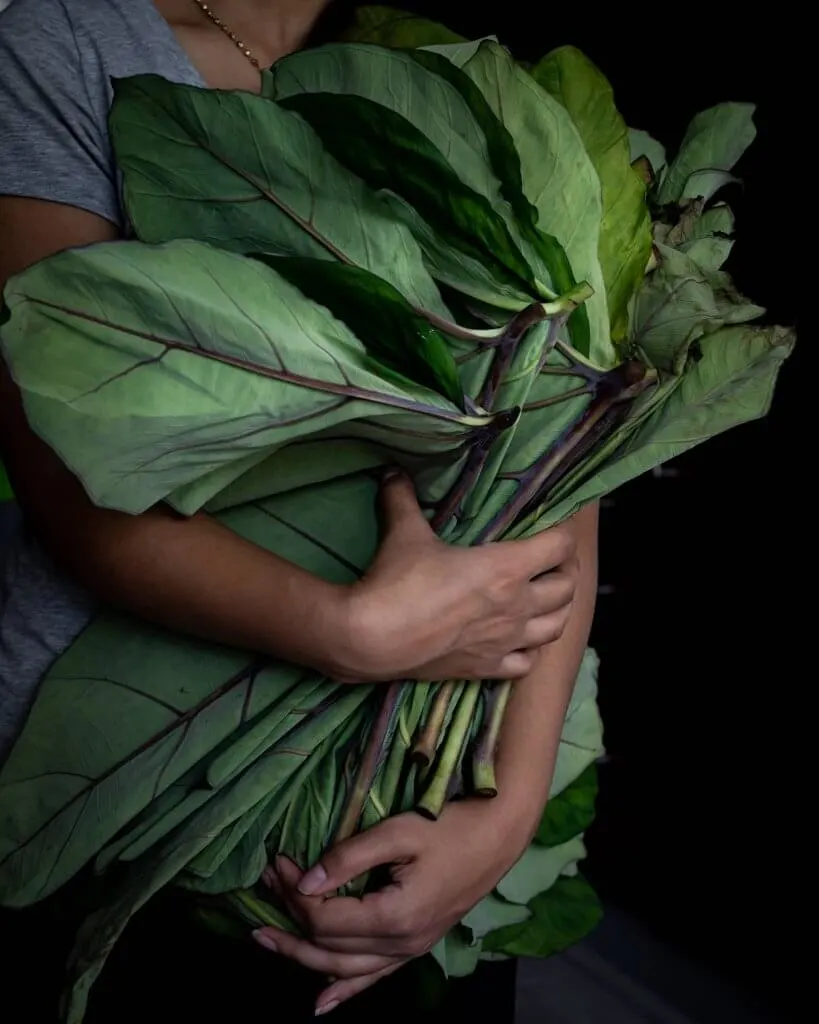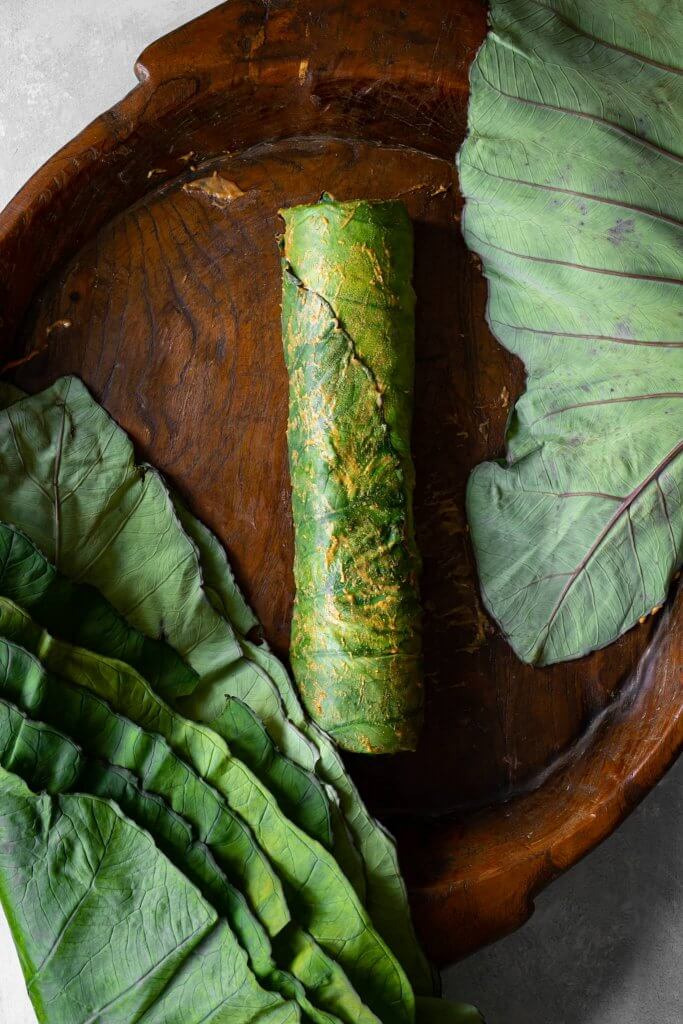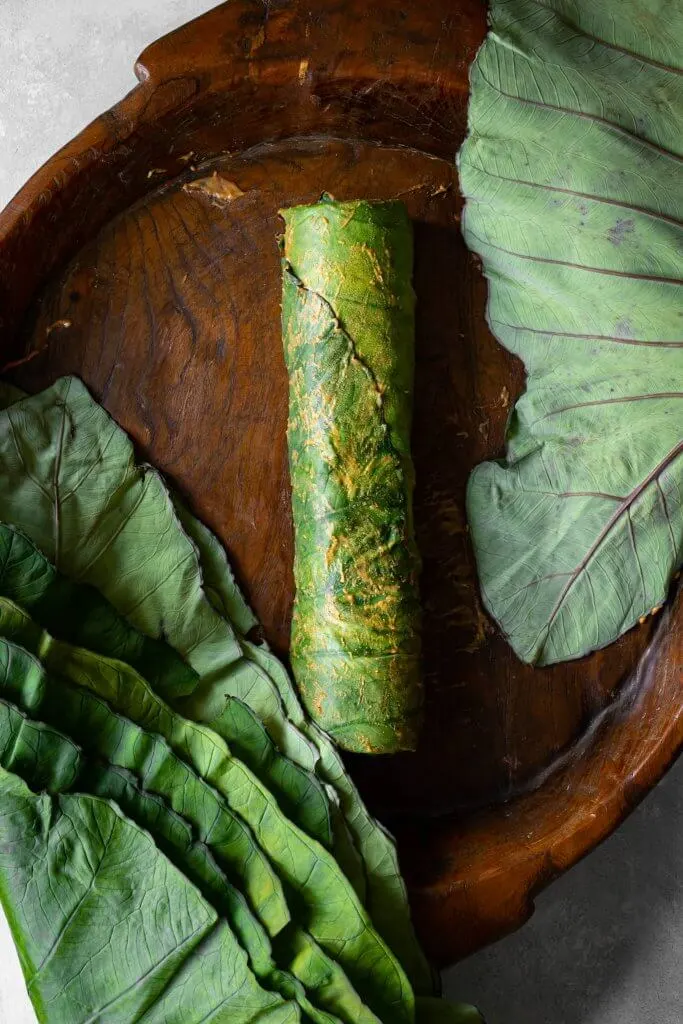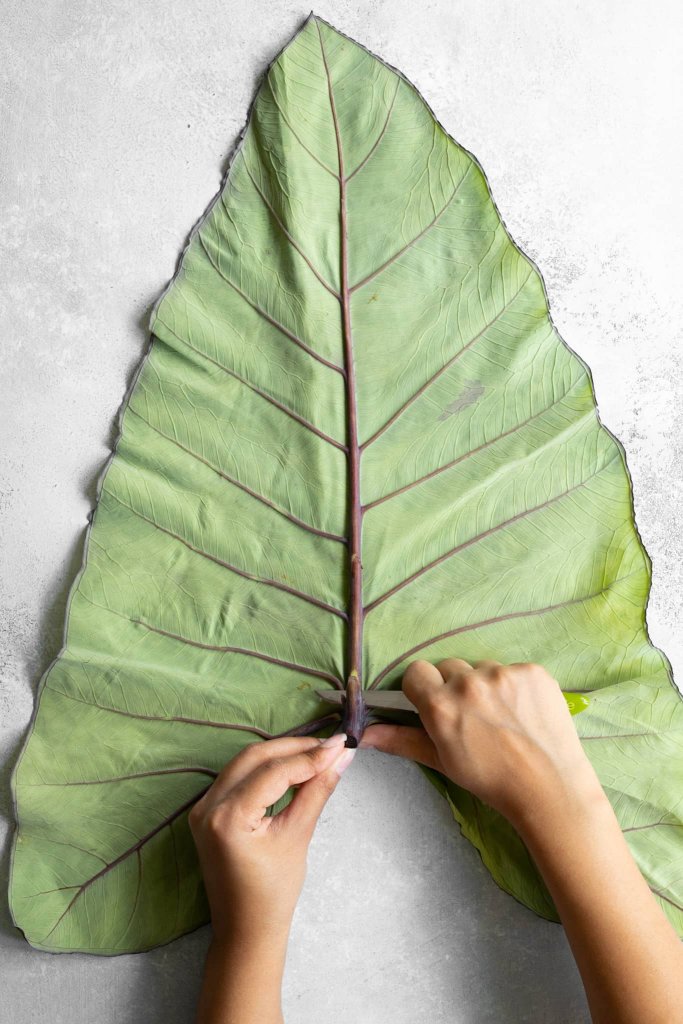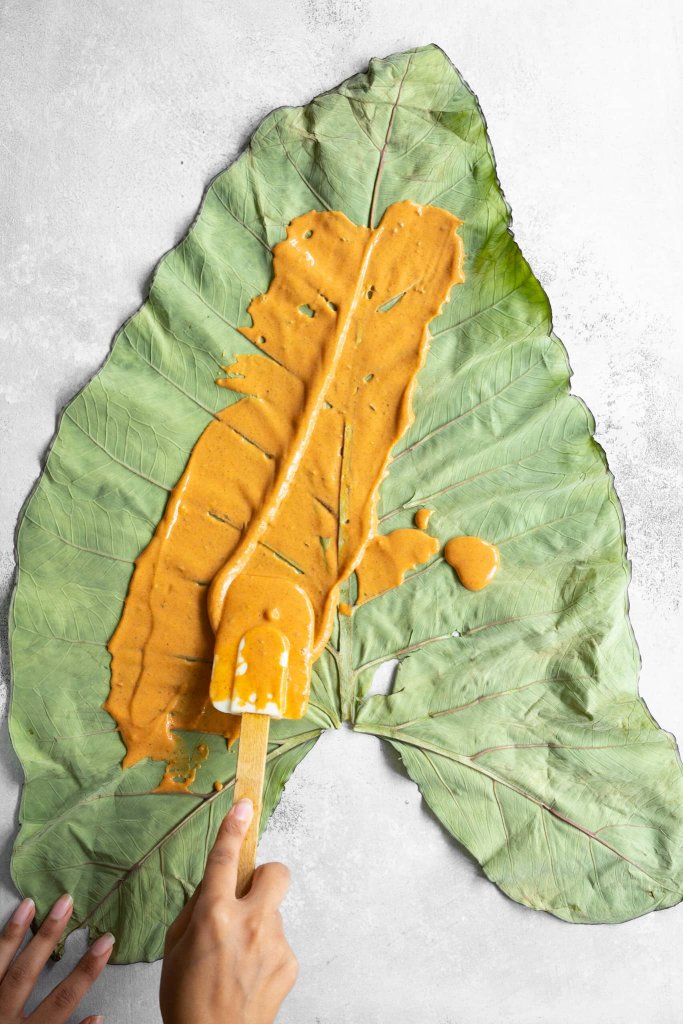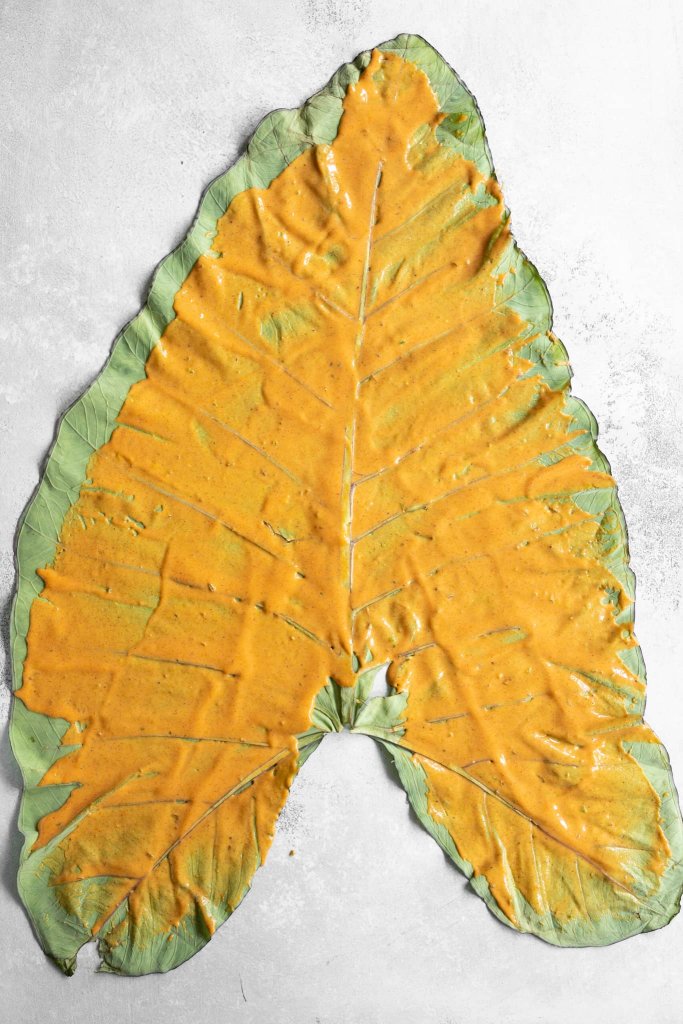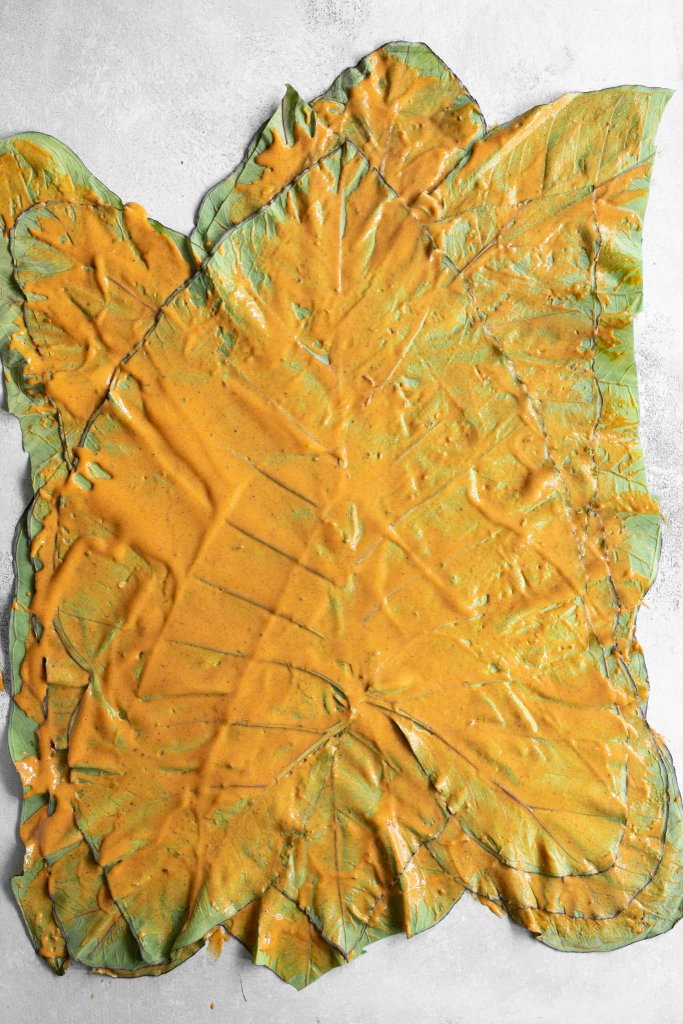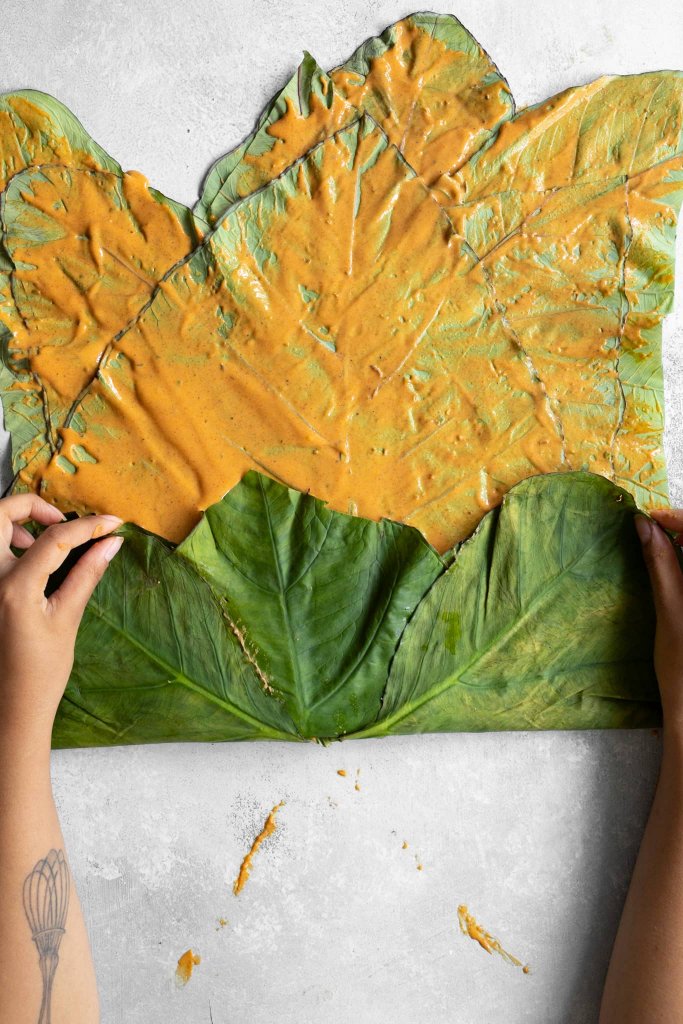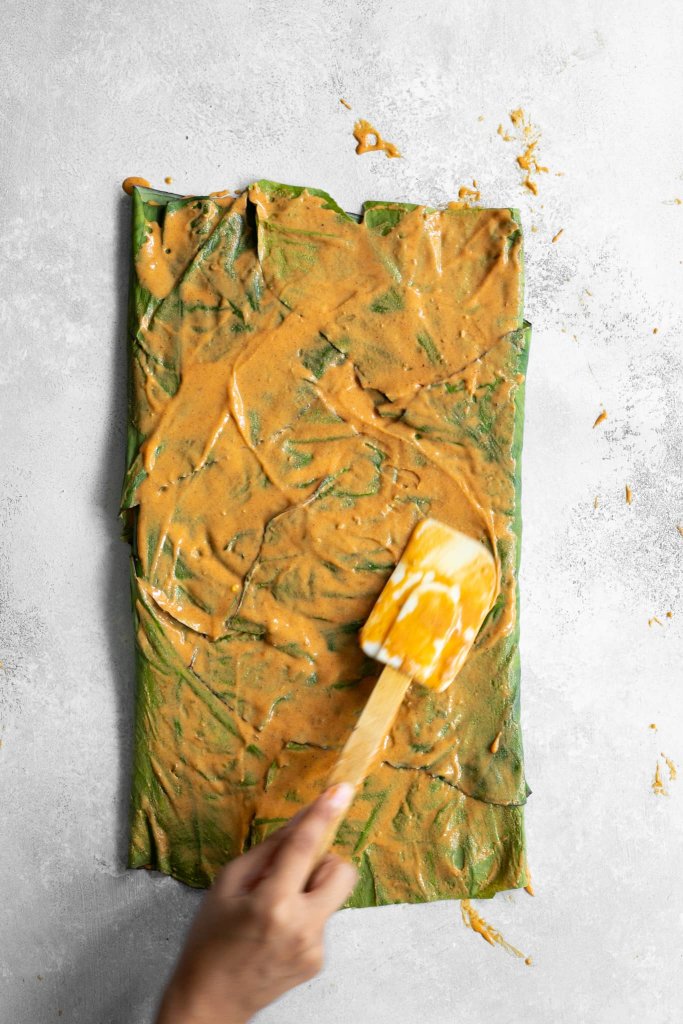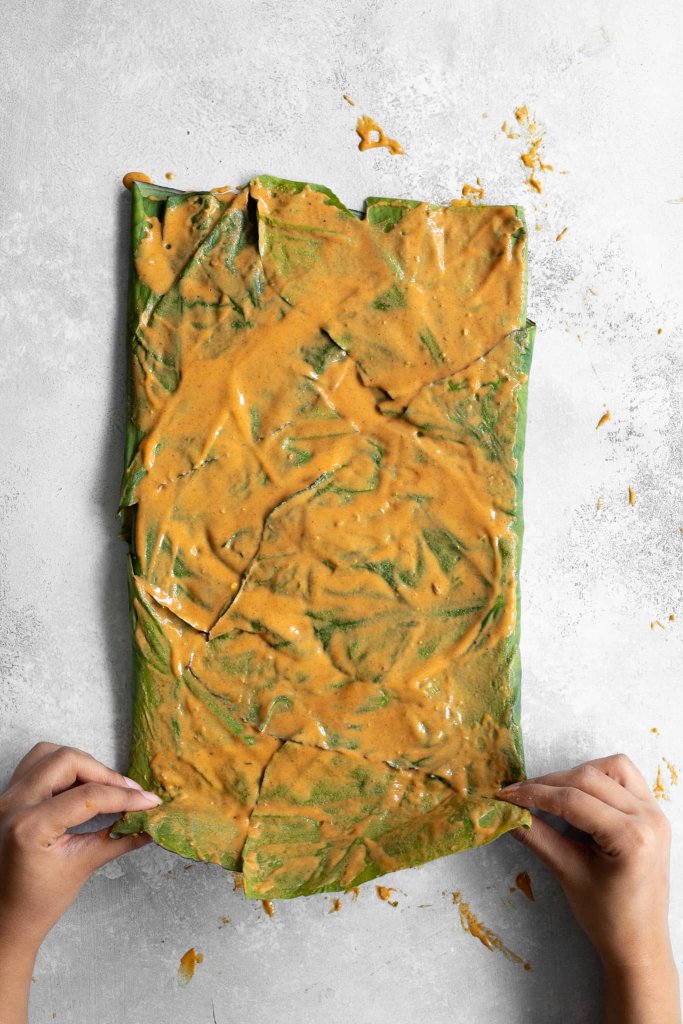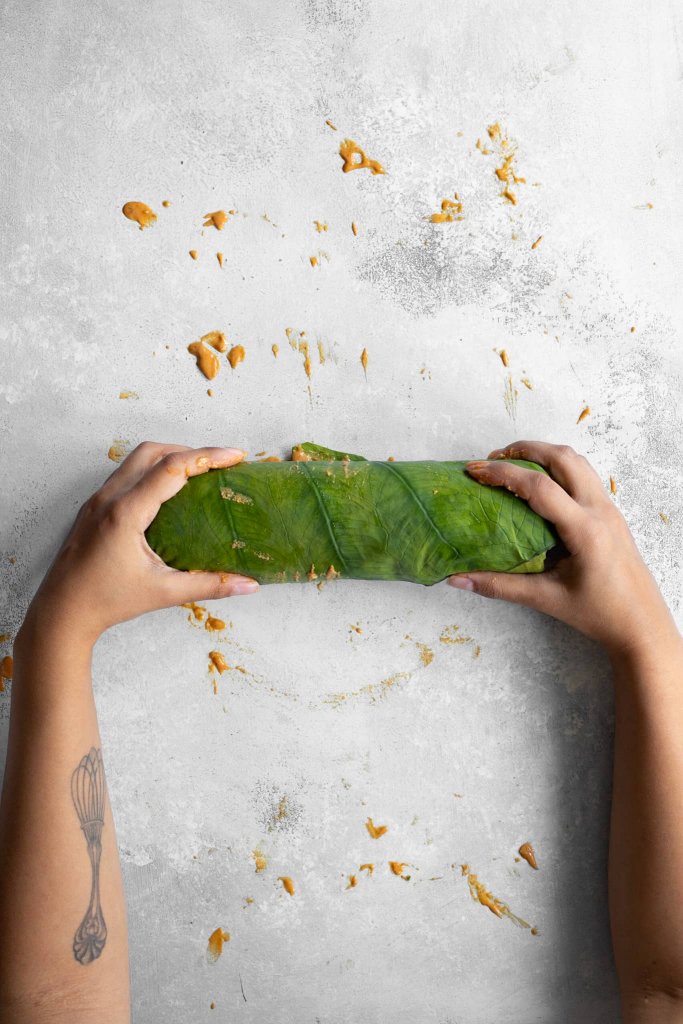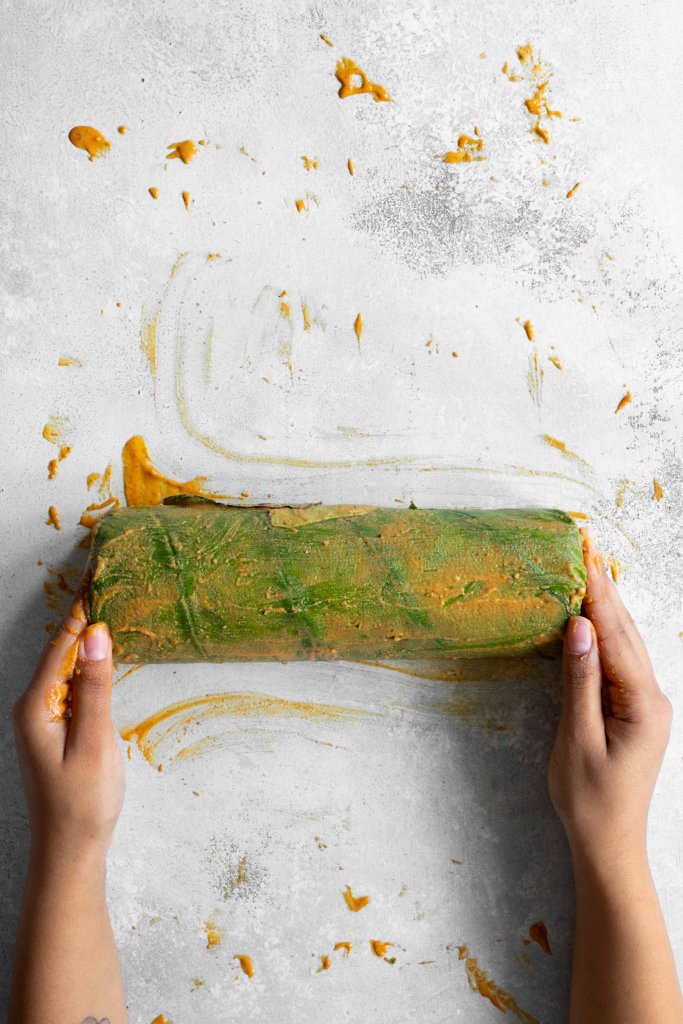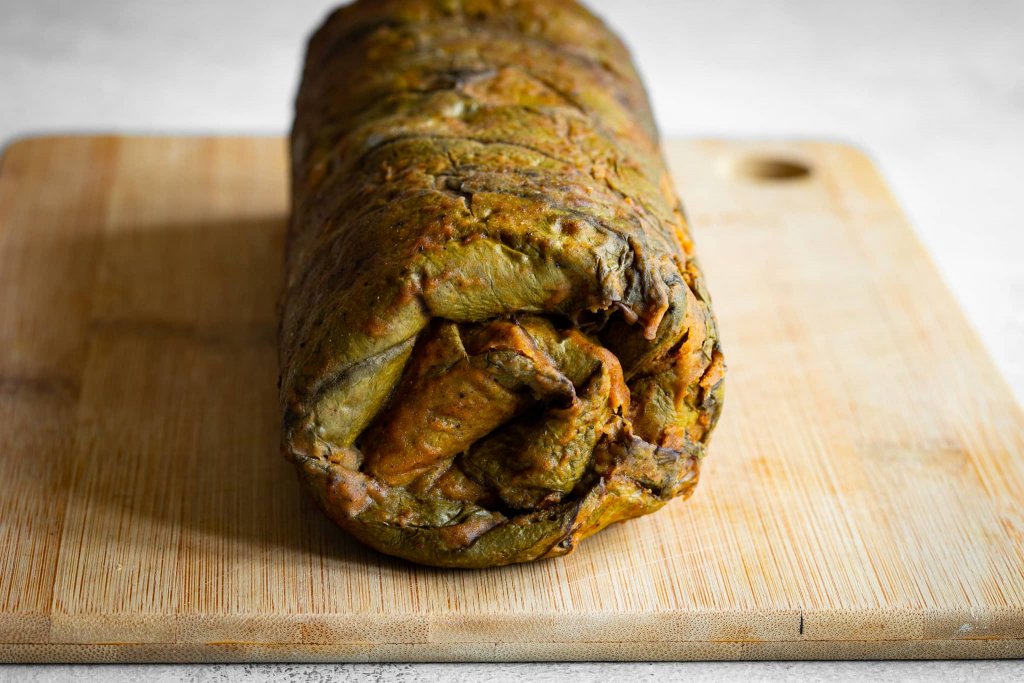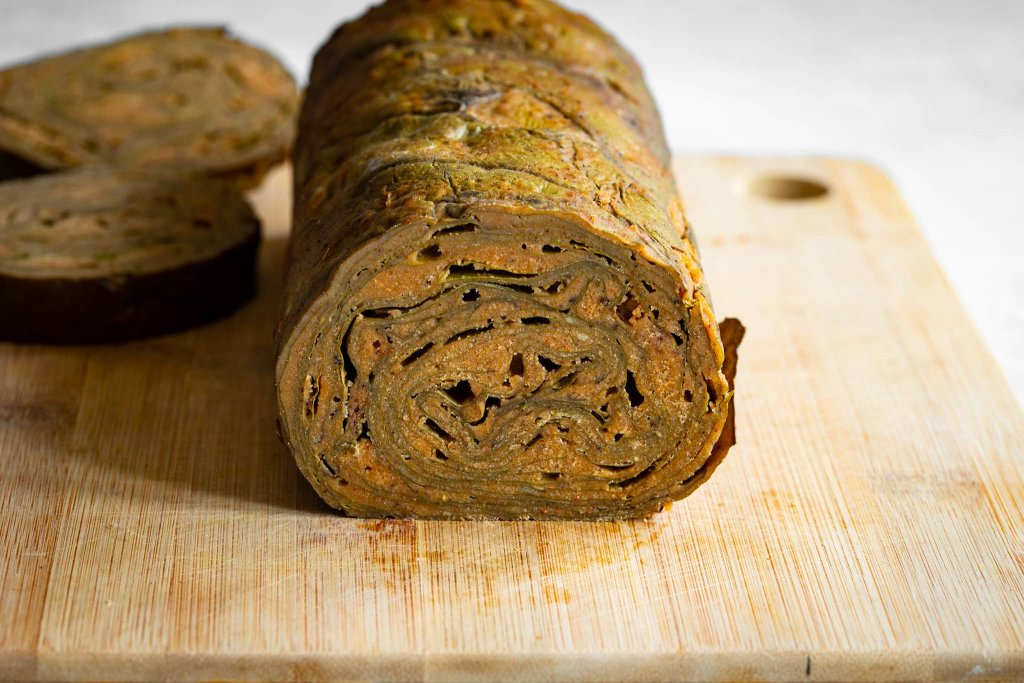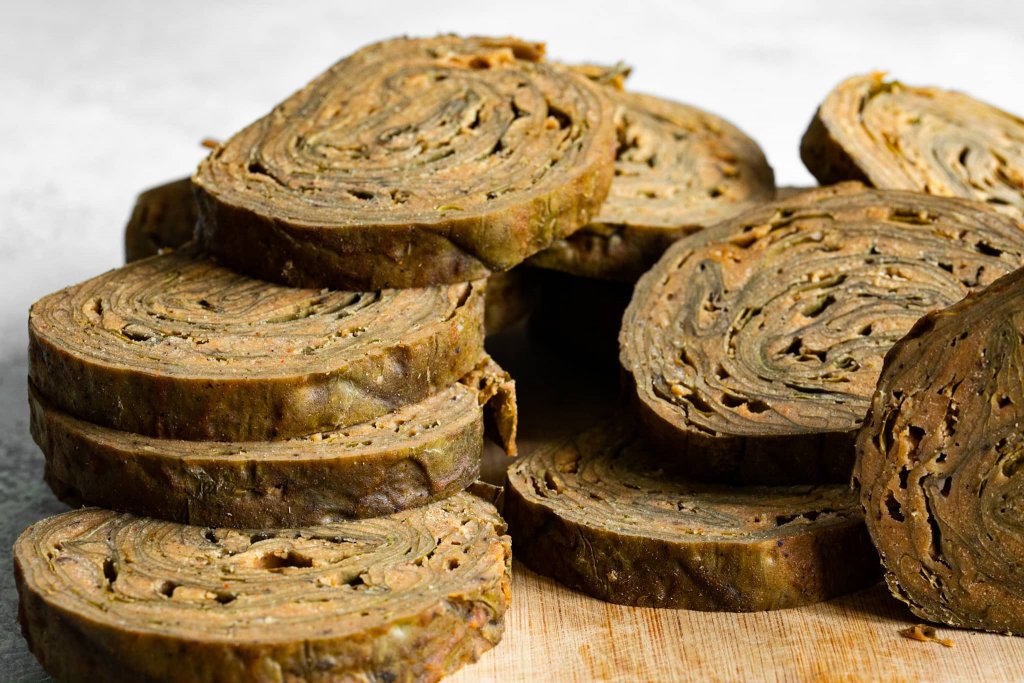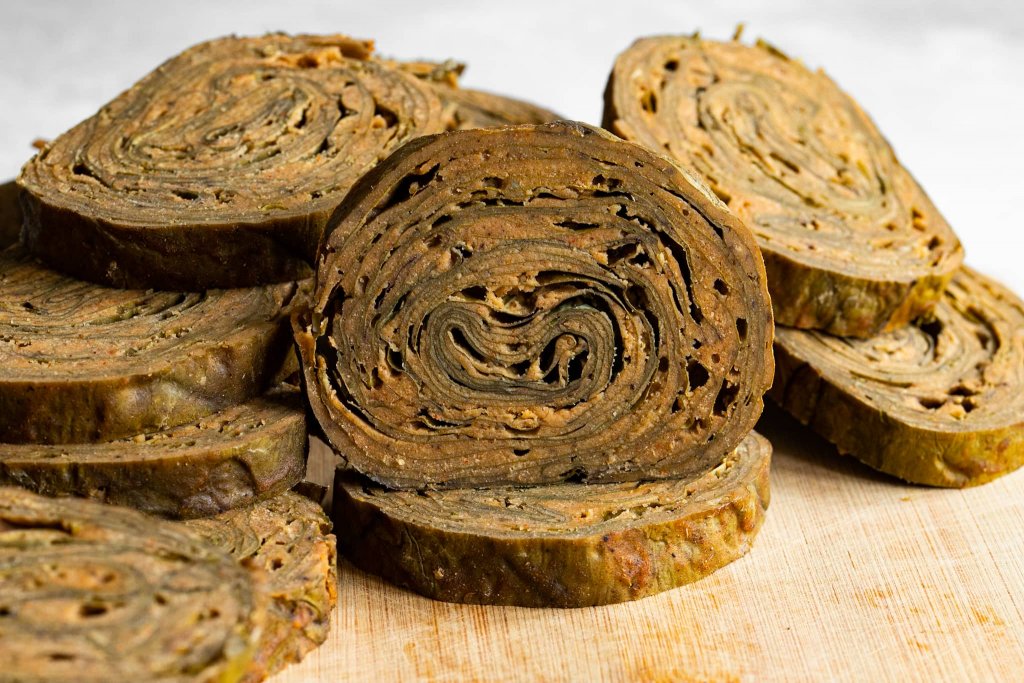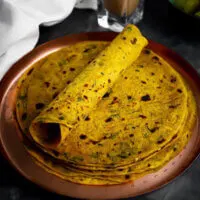Here’s a foolproof step-by-step Patra recipe with pictures and video so you too, can make this Gujarati and Maharashtrian favourite with ease. This is the ultimate guide to homemade Patra.
What are Patra?
Patra are colocasia leaves we spread, stack, roll, steam and fry. Roll the leaves up tightly with sweet and sour tamarind paste and then simply steam, slice and pan fry with spices. Here, you’ll find the most detailed guide to making homemade Patra. Follow my step-by-step recipe and learn the best tips and tricks for traditional Patra. Wait, how did we get this far without me asking what you call them?
What are some other names for Patra?
If Patra isn’t a name you’re familiar with, you might know these steamed and fried colocasia rolls as one of the many other names it goes by: Timpa, Alu Vadi, Pathrode or Arvi ka Pathrode, to mention just a handful.
What leaves are used for making Patra
Colocasia leaves. These stately, dark green leaves are famous for their beautiful heart-shape and marble-like surface. It’s because of this appearance that they’re known as “elephant ears”. I think they look like love hearts! In Hindi, colocasia leaves are called arbi ke patte. In Gujarati, they’re patra na paan. If you’re from Maharashtra and Goa, you’ll know them as patrodo, patrode in Karnataka and patrodu in Himachal Pradesh.
What is Colocasia?
Colocasia is the plant from which we obtain the edible tuber, taro. Taro roots are starchy and similar in texture to cassava. Ultimately, the large leaves that grow from the taro plant are the leaves we need to make our delicious Patra (Timpa/Alu Vadi).
Patra recipe with spinach
You can make Patra with large spinach leaves if colocasia prove to be an elusive find. However, the final result will be different to the Patra here in this recipe. Be sure to find the biggest spinach leaves possible.
What do Patra taste like?
Patra are spicy, sweet and tangy. The predominant flavours come from tamarind, cinnamon, cloves and fennel seeds. The flavour of these rolls will snuggle your taste buds like a snuggly blanket. Chilli and jaggery work together to balance the warm spices. The texture of the finished Patra is crispy and slightly chewy. The burnished brown surface adds the most wonderful caramelised aroma, while sesame and mustard seeds lend a welcome nuttiness. The whole shebang is quite the flavour blast.
Visual guide: How to make Patra
1. Clean and trim the colocasia leaves
2. Spread and stack Patra with tamarind batter
3. Fold and roll the colocasia leaves
4. Steam and slice the Patra once cool
How to serve Patra
You can pan-fry Patra with a tempering of seeds and spices for a crispy vegan and gluten-free Indian snack. They’re perfect with chai. Enjoy these Patra warm or at room temperature. Indeed, a cup of masala chai is obligatory, not optional. Get your snack on!
Are Patra vegan?
My recipe for Patra is suitable for vegans.
Are Patra gluten free?
This recipe can be suitable for those who follow a gluten-free diet. Be sure to use pure asafoetida, not a blend. Many commercial brands include wheat flour which is not gluten free. However, if you don’t have pure asafoetida, simply leave it out of the recipe.
Perfect Patra (Timpa/Alu Vadi) Recipe
Pin it for later! Perfect Patra (Timpa/Alu Vadi)
If you like this, you’ll love my recipe for Gujarati Khaman
More Indian snacks you might enjoy
Love Sanjana Share this recipe



